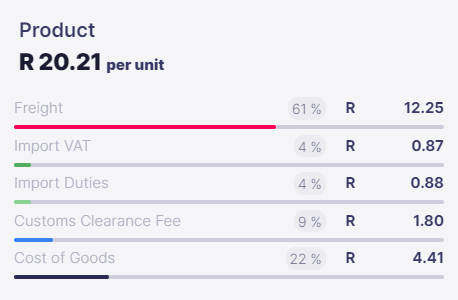
Making sure your online orders are processed and delivered fast and efficiently is integral to the success and perception of your brand. This is ultimately what determines whether customers will come back for more. In an Ipsos study from 2022, 85% of online shoppers said that if they had a bad delivery experience with a brand, they wouldn’t buy from that brand again in the future.
No matter how amazing your products might be, falling short on delivery can spell trouble for your business. So, to avoid that, let’s take a look at a few crucial delivery objectives you need to set and prioritise.
Nothing drives a customer crazier than late deliveries or, even worse, packages that never show up. If you’ve been operating an online store for some time, you understand all too well that retaining a past customer is way easier than convincing a new one to give your business a shot.
If a delivery goes south because of an unreliable shipping provider, you risk losing that customer for good, along with all the future business they could’ve brought your way. You need a shipping partner you can completely rely on – otherwise, you risk falling behind your competitors, which, we’re pretty sure, is something you want to avoid.
Choosing your packaging involves a lot more than just aesthetics. Unfortunately, this is something many new business owners tend to overlook. The main job of packaging is to keep your products safe while it’s on the move. If you skimp on quality, you’ll almost certainly suffer losses later on. Fragile packaging that leads to items breaking is one of the main contributors to returns. According to PakFactory, about 34% of returns linked to packaging occur because customers receive damaged items.
Things like continuous cargo shifting, boxes taking accidental tumbles, and trucks hitting bumps in the road can all lead to damaged products. This is why you need to ensure that both the primary and secondary packaging are up to par. The last thing you want is to end up chucking loads of products, giving refunds, or selling items at a discounted price just because you didn’t give enough attention to your packaging.
For any business, the goal is to spend less while making more. In e-commerce delivery, many small business owners struggle to manage shipping costs and secure good rates with their shipping partners.
However, when you outsource your e-commerce fulfilment, you team up with other businesses, allowing you to access better shipping rates through collective bargaining power. This means you can offer customers discounted shipping, which is a huge draw for many buyers looking for the best deals.
The most common question online stores receive from customers is, “Where’s my package?” Customers don’t like being left in the dark about where their shipment is or when it’s due to arrive. Even if everything else went well, not having this information can greatly affect how they perceive their entire interaction with your business.
To give your customers a sense of control over their orders, you can always set up an order tracking system. This usually includes features like estimated delivery dates, shipment tracking, and order status updates. With these tools, your customers will always know exactly where their package is in transit.
Frequent mistakes in orders can lead to returns and customers losing trust in you and your business. Do you know how many of your orders are shipped without any errors? This is known as your “order accuracy rate” and you can calculate it using this formula:
Order accuracy rate = (Total Correctly fulfilled orders / Total orders fulfilled) * 100
When you measure order accuracy, you can pinpoint issues quickly without drowning in data. Remember, it’s unlikely that you’ll reach a perfect 100% accuracy rate – you’re human, after all, and mistakes are bound to happen. Most successful brands typically maintain rates between 96% to 98%.
If you want to improve your order accuracy rate, your best bet would be to partner with a dependable 3PL that specialises in streamlining and optimising the fulfilment process.
In the dynamic realm of cross-border e-commerce, the meticulous prioritisation of consistent and timely deliveries, proper packaging, efficient shipping costs, transparent order tracking, and high order accuracy rates is paramount. Elevate your brand’s reliability and customer satisfaction by partnering with us, as we specialise in crafting a seamless and trustworthy cross-border e-commerce delivery solution tailored to the unique needs of your business. Contact us today to explore how we can collaboratively build a robust framework for your e-commerce success.
Don’t use
A quality delivery experience is what makes customers want to return to your business time and time again. When you partner with Airpool, you can count on quick and precise order fulfilment, all while cutting down on fulfilment and shipping expenses. Why not have your cake and eat it too?
Landed cost is the sum of all expenses associated with importing your goods from China to South Africa. This includes the cost of the goods paid to your supplier, the shipping costs, clearance costs and the import taxes & duties.
It is represented on a per unit cost and helps you with:
Note: This is not what you are paying to Airpool but rather what you are paying to all the suppliers and relevant parties: Airpool, the Manufacturer of the goods and the Import Taxes (VAT & Duties)
